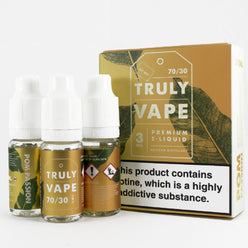Vaping has become an international phenomenon, but what does the law have to say about it?
As such a young technology, E cigarettes have skyrocketed in popularity, whilst the technical innovations that come alongside them have grown faster than international laws could keep up. This has led to vaping laws only catching up recently. As early as May this year, the Tobacco Products Directive set out a new set of laws with which to better regulate vaping. Although this was set up to better control the amount of vape devices and vape liquid being sold and how it is regulated through tax and material restrictions, this may still have an effect on the way that people approach vaping.

TPD LAWS
May of this year saw a whole range of laws be introduced to the UK which worked in tandem with the new laws on tobacco regulation. As another nicotine product, vaping was also affected. Below you can find some of the laws which were introduced.
10 ml max refill containers
The new laws on refill containers mean that you can only buy them in 10 ml bottles, down from significantly larger sizes in the past. This has led to an increase in the amount of waste produced by the extra plastic bottles and packaging and will cost more money for companies manufacturing these bottles. This then, is becoming an extra strain on the vaping community and is definitely becoming both wasteful and economically unviable as the years move on.
Tank capacity cap at 2ml
Many sub ohm tanks reach above 2ml meaning that many products have been taken off the market or had to be modified. This law now means that you will also be refilling your tanks far more often, adding a new strain on vapers. The good thing however, is that if you opt for unregulated devices, you can begin to make your own tanks, meaning that the devices you make will have their own tank capacities. It is regulations like this which have led to an increase in the mod community, the DIY ethos lending itself to a host of social activities such as games and competitions.
Nicotine strengths of 20 mg
The problem with the cap on nicotine amounts in vape liquidsis that those using vaping as a smoking cessation tool who are coming from a heavy smoking habit may end up finding their needs not met with the new cap. From the TPD’s standpoint, it is to stop people becoming even more addicted to nicotine, but from the point of view of the vaper this means a loss of that extra nicotine scratch. The new cap of 20 mg will stop the common 24 mg juices from being on the market. However, this again is a great opportunity for the DIY vaping community who have found new ways of mixing their own juices so as to up the nicotine content. The problem is that soon this market will be hit by the bans. This market used to be known for its72 mg nicotine strength.
Quality control
New quality control laws have been put in place in regards to packaging requirements, customer notifications and data reporting. The good thing is that this element has been welcomed by the industry due to the fact that it will help to make sure that products are safe and reliable rather than letting sub-par juices onto the market. This will also let the vape industry stay on top when it comes to being medically and scientifically recommended as a great alternative to smoking tobacco.


